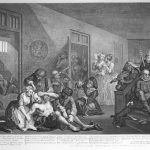 A few months back I wrote on my Navigating Epilepsy Blog about stigma in epilepsy. I’m writing on the same topic with regards to psychogenic non epileptic seizures because non-epileptic patients face this kind of stigma too.
A few months back I wrote on my Navigating Epilepsy Blog about stigma in epilepsy. I’m writing on the same topic with regards to psychogenic non epileptic seizures because non-epileptic patients face this kind of stigma too.
What is stigma?? According to www.dictionary.reference.com, it’s “a mark of disgrace; a stain or reproach, as on one’s reputation.”
We just need to look through history books to see how mental health has been mischaracterized (stigmatized) for hundreds to thousands of years. It was not that long ago that mentally ill people used to be placed in separate buildings-with lepers, criminals or other “untouchables.” Some of the famous asylums in Europe would keep patients chained to the walls for years on end without even providing a toilet and putting on shows with some of the more volatile patients that the public paid to see. So, of course, the image of mental illness became more and more degraded and shunned.
A person who is stigmatized often ends up being seen as less intelligent, is looked down on and may be locked up. They may be considered contagious, evil, or dangerous. If there is enough social pressure from the community, the person who is being stigmatized may end up “self-stigmatizing” (e.g. being convinced that you are in fact unlovable, unable to be independent, to work, to parent, to live life fully, that you are somehow flawed and worthless).
The society’s prejudices about mental illness can turn into real restrictions of civil rights (i.e. voting, parenting, living independently, forced sterilization), as well as, negative media portrayals suggesting a connection between violence and mental illness.
An important number to keep in mind is that mental illness actually affects many, many people. The Kim Foundation (http://www.thekimfoundation.org/html/about_mental_ill/statistics.html) reports that “an estimated 26.2 % of Americans ages 18 and older or about one in four adults suffer from a diagnosable mental disorder in a given year.” So, about one in four fall in this category at some point in time. As for psychogenic non-epileptic seizures, an article from the year 2000 by Benbadis and Hauser reported: “The prevalence of psychogenic non-epileptic seizures is somewhere between 1/50 000 and 1/3000, or 2 to 33 per 100 000.” The more we are aware of just how large these numbers are, the more confidence we should feel when fighting stigma and ignorance against mental illness and against psychogenic non-epileptic seizures in particular.
Fortunately, these misconceptions are beginning to change as the public becomes more educated. An excellent source of reputable information and resources can be found at the National Institute of Mental Health (http://www.nimh.nih.gov/index.shtml).


Hi there i am kavin, its my first occasion to commenting anywhere, when i read this paragraph i thought i could also create
comment due to this brilliant post.